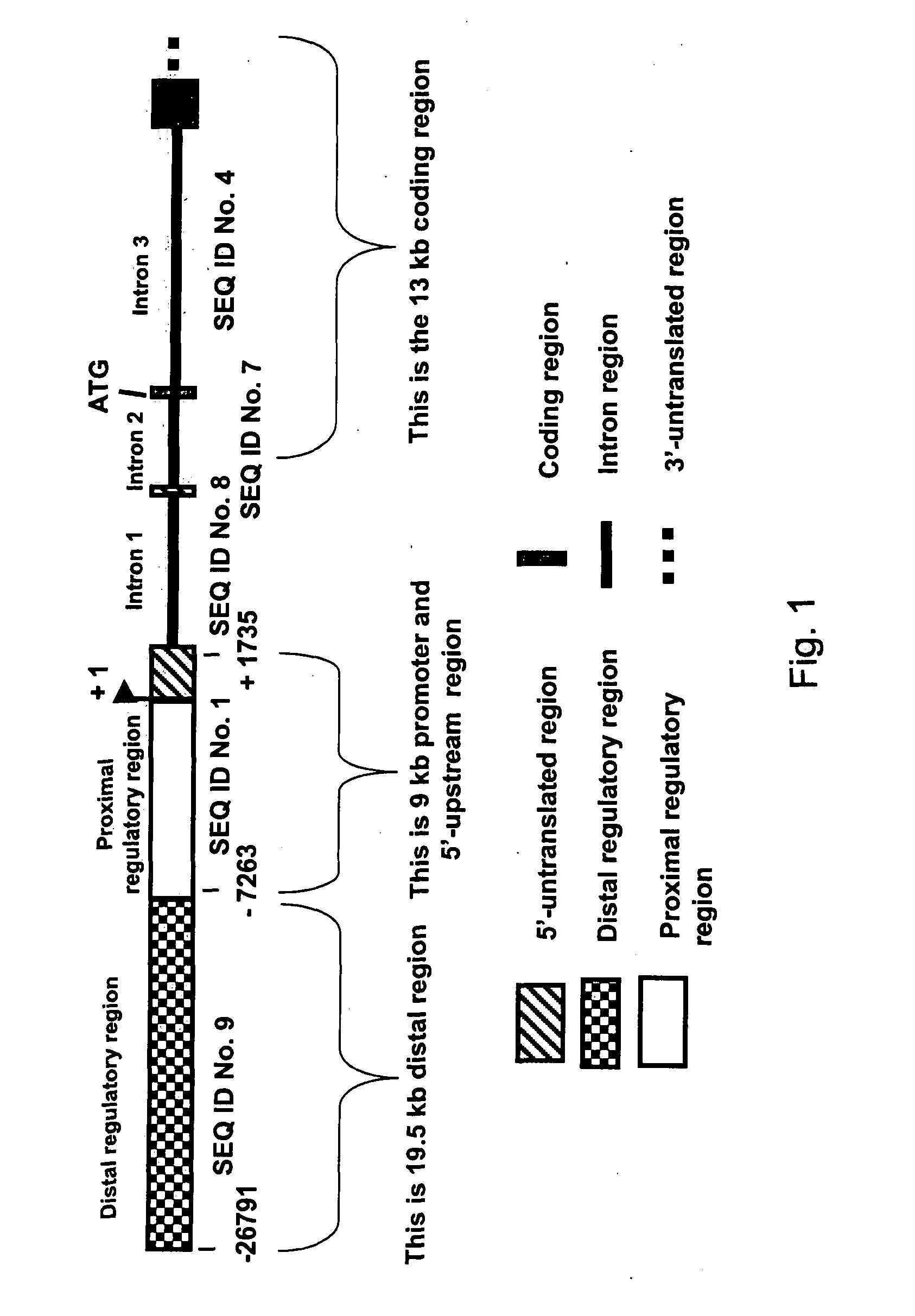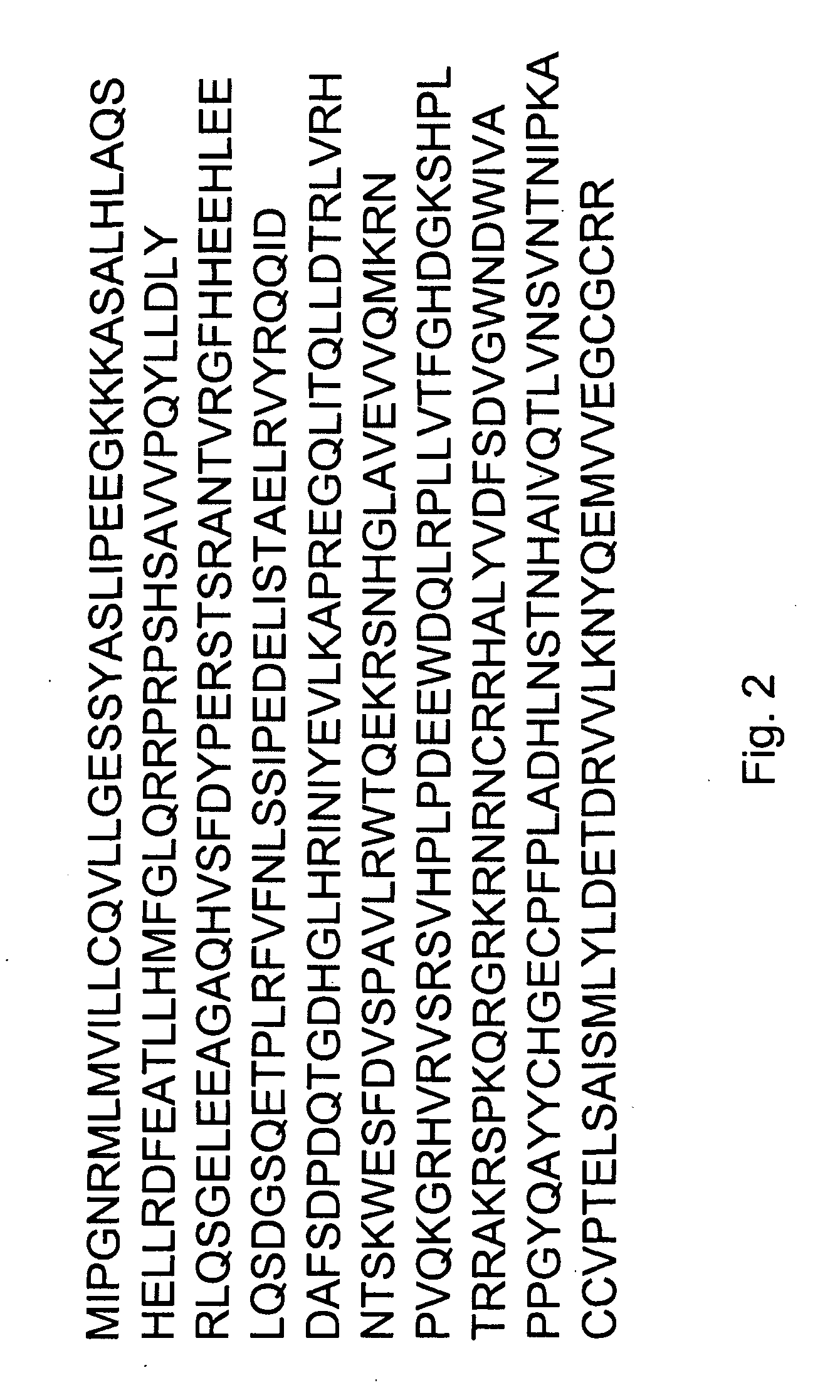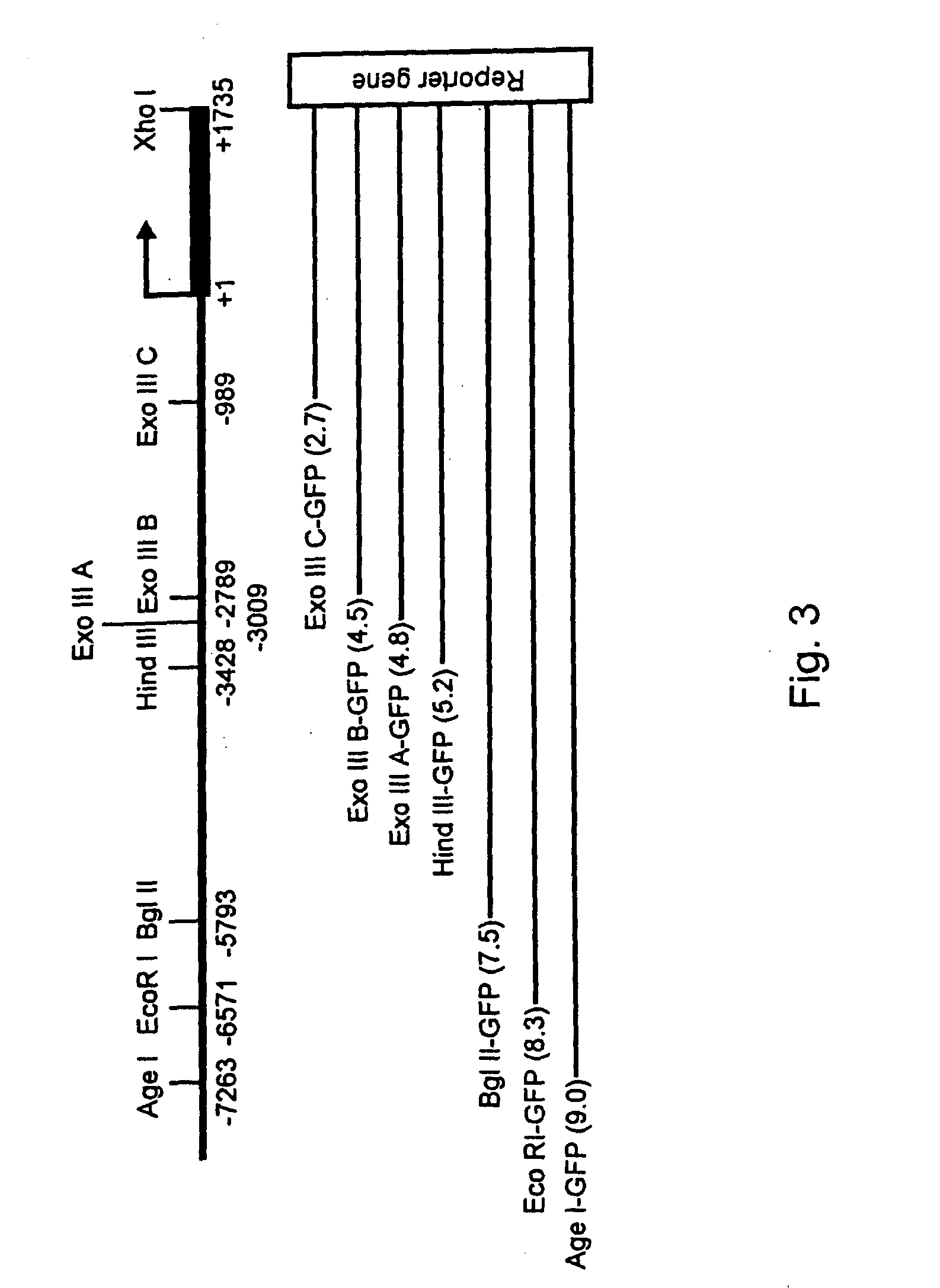Expression of zebrafish bone morphogenetic protein 4
a morphogenetic protein and zebrafish technology, applied in the field of transforming growth factor, can solve the problem that little is known about the signal transduction involved in the bmp signaling pathway and other problems
- Summary
- Abstract
- Description
- Claims
- Application Information
AI Technical Summary
Problems solved by technology
Method used
Image
Examples
example 1
Fish Maintenance
[0107] Adult zebrafish (Danio rerio) were raised at the zebrafish facility in the Institute of Zoology, Academia Sinica. The fishes were maintained in 20 liter aquariums supplied with filtered fresh water and aeration under a photoperiod of 14 hour light and 10 hour dark as described in The Zebrafish Book (Westerfield, 1995).
[0108] Cleavage-stage embryos represented a mixture of embryos between 2-cell and 16-cell. Blastula-stage embryos represented a mixture of embryos at 512-cell or higher stage. Gastrula-stage embryos represented a mixture of embryos between shield and 75% epiboly. Segmentation-stage embryos represented a mixture of embryos between 14-somite and 20-somite. Pharyngula-stage embryos represented a mixture of embryos between prim-5 and prim-25.
example 2
Total RNA Isolation
[0109] Total RNA from embryos at different developmental stages was isolated using guanidinium thiocyanate-phenol-chloroform extraction method. Total RNA from different adult organs and tissues was extracted using RNAzol B following the protocol from manufacturer (Tel-Test, Inc.). For the RT-PCR reaction, total RNA was first digested with RNase-free DNase 1 (150 units in a 200-μl reaction volume) in 40 mM Tris-HC1 pH 7.5, 6 mM MgCl2, 10 mM NaC1 at 37° C. for about 30 min, followed by phenol-chloroform extraction. DNA and RNA concentrations were determined spectrophotometrically (Hitachi U2000).
example 3
RT-PCR
[0110] PCR reactions (100 μl) were performed using a mixture containing 10 μg of genomic DNA, 100 pmole primers, 5 mM MgCl2, 0.2, mM dNTP, and 2.5 units of Replitherm DNA polymerase (Eicentre). PCR cycles were set as follows: 1 min at 94° C., 1 min at 50° C., 1 min at 72° C. for 35 cycles, 10 min at 72° C. for 1 cycle and the resulting product was stored at 4° C. DNase-I treated total RNA from embryos at different developmental stages (3 μg) or from different adult organs and tissues (0.5 μg) and components from GeneAmp RNA PCR kit (Perkin Elmer) were used to generate the first-strand cDNA. Twenty microliters of cDNA products were then used in a PCR reaction as described above with a pair of two BMP4-specific primers. The two BMP4-specific primers are: 5′-TGGTCACATTCGGACATGACGGCA-3′ and 5′-AGA / GTCTCCGTTTACCGGCAGCCA-3′. PCR conditions were set as follows: 1 min at 94° C. for 1 cycle, 1 min at 94° C., 1 min at 64° C., 1 min at 72° C. for 35 cycles, 10 min at 72° C. for 1 cycle,...
PUM
| Property | Measurement | Unit |
|---|---|---|
| fluorescent | aaaaa | aaaaa |
| green fluorescent | aaaaa | aaaaa |
| nucleic acid | aaaaa | aaaaa |
Abstract
Description
Claims
Application Information
 Login to View More
Login to View More - R&D
- Intellectual Property
- Life Sciences
- Materials
- Tech Scout
- Unparalleled Data Quality
- Higher Quality Content
- 60% Fewer Hallucinations
Browse by: Latest US Patents, China's latest patents, Technical Efficacy Thesaurus, Application Domain, Technology Topic, Popular Technical Reports.
© 2025 PatSnap. All rights reserved.Legal|Privacy policy|Modern Slavery Act Transparency Statement|Sitemap|About US| Contact US: help@patsnap.com



